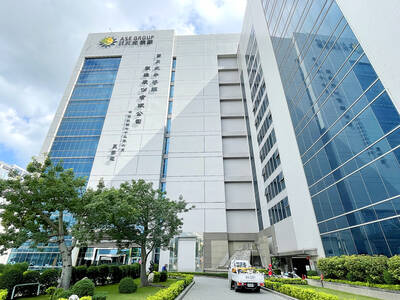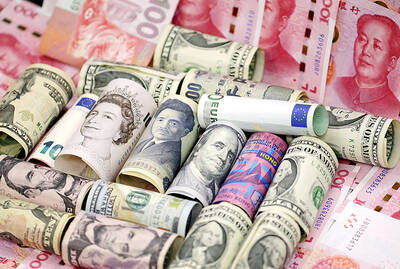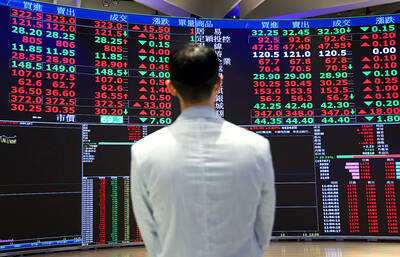This is the Good Club, the name given to the tiny global elite of billionaire philanthropists who recently held their first and highly secretive meeting in the heart of New York City.
The names of some of the members are familiar figures: Microsoft chairman Bill Gates, stock investors George Soros, Warren Buffett, entertainer Oprah Winfrey, banker David Rockefeller and media entrepreneur Ted Turner. But there are others, too, like business giants Eli and Edythe Broad, who are equally wealthy but less well known. All told, its members are worth US$125 billion.
The meeting — called by Gates, Buffett and Rockefeller — was held in response to the global economic downturn and the numerous health and environmental crises that are plaguing the globe. It was, in some ways, a summit to save the world.
No wonder that when news of the secret meeting leaked, via the seemingly unusual source of an Irish-American Web site, it sent shock waves through the worlds of philanthropy, development aid and even diplomacy.
“It is really unprecedented. It is the first time a group of donors of this level of wealth has met like that behind closed doors in what is in essence a billionaires’ club,” said Ian Wilhelm, senior writer at the Chronicle of Philanthropy magazine.
The existence of the Good Club has struck many as a two-edged sword. On one hand, they represent a new golden age of philanthropy, harking back to the early 20th century when the likes of John D. Rockefeller, Vanderbilt and Carnegie became famous for their good works. Yet the reach and power of the Good Club are truly new. Its members control vast wealth — and with that wealth comes huge power that could reshape nations according to their will. Few doubt the good intentions of Gates and Winfrey and their kind. They have already improved the lives of millions of poor people across the developing world. But can the richest people on earth actually save the planet?
That the group should have met at all is indicative of the radical ways in which philanthropy has changed over the past two decades. The main force behind that change is Gates and his decision to donate almost all his fortune to bettering the world. Unlike the great philanthropists of former ages, Gates is young enough and active enough to take a full hands-on role in his philanthropy and craft it after his own ideas. That example has been followed by others, most notably Soros, Turner and Buffett. Indeed, this new form of philanthropy, where retired elite businessmen try to change the world, has even been dubbed “Billanthropy” after Gates. Another description is “philanthro-capitalism.”
Yet the implications of the development of philanthro-capitalism are profound. It was fitting that the Good Club was meeting near the UN. The club members’ extreme wealth makes it as powerful as some of the nations with seats inside that august chamber.
Proponents of philanthro-capitalism would argue that they are also more effective in doing good for ordinary people. Indeed the club’s members have given away about US$70 billion in the past 12 years. That is far beyond what many individual countries can afford to do with their own social policies and aid budgets.
“They have assets that rival the social spending budgets of many countries,” said Paul Schervish, director of Boston College’s Center on Wealth and Philanthropy.
But there is a potential downside to the growth of these “uber donors,” especially if the whims of individuals start to take precedence over the expertise of professionals.
The strange truth is that giving away billions of dollars is difficult and fraught with risk. There can be waste, mismanagement and poor investment. At the same time it can actually do harm.
“If you are putting enormous amounts of money into a community that can’t cope with it, then you can implode that community,” said Gayle Peterson, co-founder of Headwaters Group Philanthropic Services.
Some people are crying conspiracy. That idea has particular power on the Christian right of the US, which has reacted angrily to the idea that the club discussed birth control and overpopulation. Experts in the philanthropy field think that this negative image can be countered by more openness for future Good Club meetings.
“If they do hold more meetings, and every indication is that they will, I think people would want them to be more public. After all, they can make decisions that affect millions of peoples’ lives,” Wilhelm said.
That is true. If the members of the Good Club wish to wield their undoubted power, they may have to get used to the idea of doing it more openly.

EXPANSION: The investment came as ASE in July told investors it would accelerate capacity growth to mitigate supply issues, and would boost spending by 16 percent ASE Technology Holding Co (ASE, 日月光投控), the world’s biggest chip assembly and testing service provider, yesterday said it is investing NT$17.6 billion (US$578.6 million) to build a new advanced chip packaging facility in Kaohsiung to cope with fast-growing demand from artificial intelligence (AI), high-performance-computing (HPC) and automotive applications. The new fab, called K18B, is to commence operation in the first quarter of 2028, offering chip-on-wafer-on-substrate (CoWoS) chip packaging and final testing services, ASE said in a statement. The fab is to create 2,000 new jobs upon its completion, ASE said. A wide spectrum of system-level chip packaging technologies would be available at

Taiwan’s foreign exchange reserves hit a record high at the end of last month, surpassing the US$600 billion mark for the first time, the central bank said yesterday. Last month, the country’s foreign exchange reserves rose US$5.51 billion from a month earlier to reach US$602.94 billion due to an increase in returns from the central bank’s portfolio management, the movement of other foreign currencies in the portfolio against the US dollar and the bank’s efforts to smooth the volatility of the New Taiwan dollar. Department of Foreign Exchange Director-General Eugene Tsai (蔡炯民)said a rate cut cycle launched by the US Federal Reserve

HEAVYWEIGHT: The TAIEX ended up 382.67 points, with about 280 of those points contributed by TSMC shares alone, which rose 2.56 percent to close at NT$1,400 Shares in Taiwan broke records at the end of yesterday’s session after contract chipmaker Taiwan Semiconductor Manufacturing Co (TSMC, 台積電) hit a fresh closing-high amid enthusiasm toward artificial intelligence (AI) development, dealers said. The TAIEX ended up 382.67 points, or 1.45 percent, at the day’s high of 26,761.06. Turnover totaled NT$463.09 billion (US$15.22 billion). “The local main board has repeatedly hit new closing highs in the past few sessions as investors continued to embrace high hopes about AI applications, taking cues from a strong showing in shares of US-based AI chip designer Nvidia Corp,” Hua Nan Securities Co (華南永昌證券) analyst Kevin Su

Nvidia Corp’s major server production partner Hon Hai Precision Industry Co (鴻海精密) reported 10.99 percent year-on-year growth in quarterly sales, signaling healthy demand for artificial intelligence (AI) infrastructure. Revenue totaled NT$2.06 trillion (US$67.72 billion) in the last quarter, in line with analysts’ projections, a company statement said. On a quarterly basis, revenue was up 14.47 percent. Hon Hai’s businesses cover four primary product segments: cloud and networking, smart consumer electronics, computing, and components and other products. Last quarter, “cloud and networking products delivered strong growth, components and other products demonstrated significant growth, while smart consumer electronics and computing products slightly declined,” compared with the